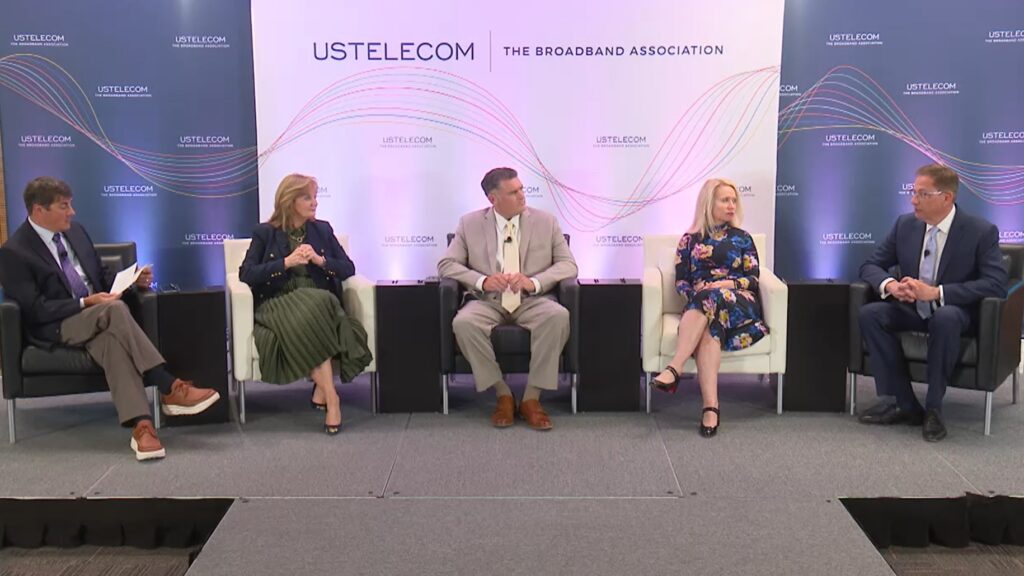State Broadband Offices Believe They’ll Meet New BEAD Deadlines
Randy Sukow
|

In state broadband offices across the nation a week ago, staffers felt alarm when the federal government announced major changes to the $42 billion Broadband Equity, Access, and Deployment (BEAD) program. But a week after reviewing the details of the National Telecommunications and Information Administration (NTIA) policy notice modifying the original BEAD original Notice of Funding Opportunity (NOFO), some state officials are more confident that they will be able to meet tight deadlines to modify their BEAD plans.
Representatives from some of the states appeared yesterday at the Speeding BEAD Summit in Washington, DC, organized by Broadband Breakfast.
“There is still a path forward here,” said Joseph Le, deputy director of Broadband Development at the Kansas Department of Commerce. “A lot of the things in the policy notice, when you look at it deeper than surface level, aren’t that different from what many states, and I’ll just say on behalf of Kansas, had already been doing anyway.”
The new policy notice gave state broadband offices 90 days to modify their BEAD plans, placing the target for refiling their plans with NTIA by Sept. 4. NTIA then plans to review the state submissions over the following 90 days and begin, possibly, distributing BEAD support before the end of 2025.
The modifications replace fiber preference in the rules with tech neutrality, placing LEO satellite and fixed wireless solutions on equal footing. The notice removes certain diversity, equity, and inclusion (DEI), labor rules, climate change requirements. It also includes removes requirements for discounted broadband rates similar to the lapsed Affordable Connectivity Program.
The new rules include cost-efficiency provisions. “The Eligible Entity must select the combination of project proposals with the lowest overall cost to the Program,” the policy notice says. For example, if there are competing applications for the same general area, if the higher bid is within 15 percent of the cost of the lowest bid on a per-location basis, the state can look at other criteria, such as speed to deployment or technical factors (speed, latency).
The rules in Kansas under the NOFO, Le said, already included such cost flexibility. However, Arkansas State Broadband Director Glen Howie worried that new project-evaluation rules could discourage some broadband providers from resubmitting. “We could have a situation where we have less competition this time than we did last time. Because people are going to get out and they’re not going to want to participate and spend more money,” he said. Less competition could lead to higher-cost project proposals.
But others predicted that the policy notice would attract more rather than fewer participants.
“It’s not only keeping people in the boat but taking the folks floating in the water and pulling them into the boat,” said Rick Cimerman, VP, External & State Affairs Lead, for NCTA -The Internet & Television Association. “There were some folks that did not bid before because of those burdensome requirements that we believe now will take the opportunity to bid again.”
Beyond the DEI, climate change and other forms of bureaucratic delay, some states found the overall NTIA process was too slow.

“There were certain limitations in the original version of BEAD that were really hampering when we could notify preliminary sub grantees; when we could make that public; when can we sign grant agreements. There was lots of red tape in that way,” said Eric Frederick, Chief Connectivity Officer for the Michigan High-Speed Internet Office. “And so, a lot of our recommendations to NTIA [prior to the policy notice] were how can we stage preliminary winners and make these announcements on a rolling basis, so we can get these shovels in the ground.”
Frederick also expressed hope that lifting earlier rules would encourage more participation. “We’re going to make the reapplication process as easy as possible for those who have already been at the table, and, of course, as easy as we can for those who might be newcomers to the program. That’s really my first goal,” he said.
The change to a more technology-neutral approach will affect different states in various ways. “The priority around fiber is extremely important in Minnesota, because we have statutory language and goals that include the word wireline,” said Bree Maki, executive director of the Minnesota Office of Broadband Development.
Maki said that Minnesota had done cost analysis and planned to reach 90 percent of BEAD households with fiber and 10 percent with satellite and fixed wireless. “We know how much it costs to get things done, and the hardest and most difficult places to serve are what’s left … The core value is people matter and deserve opportunity just like everybody else that have reliable broadband service long term,” she said.


